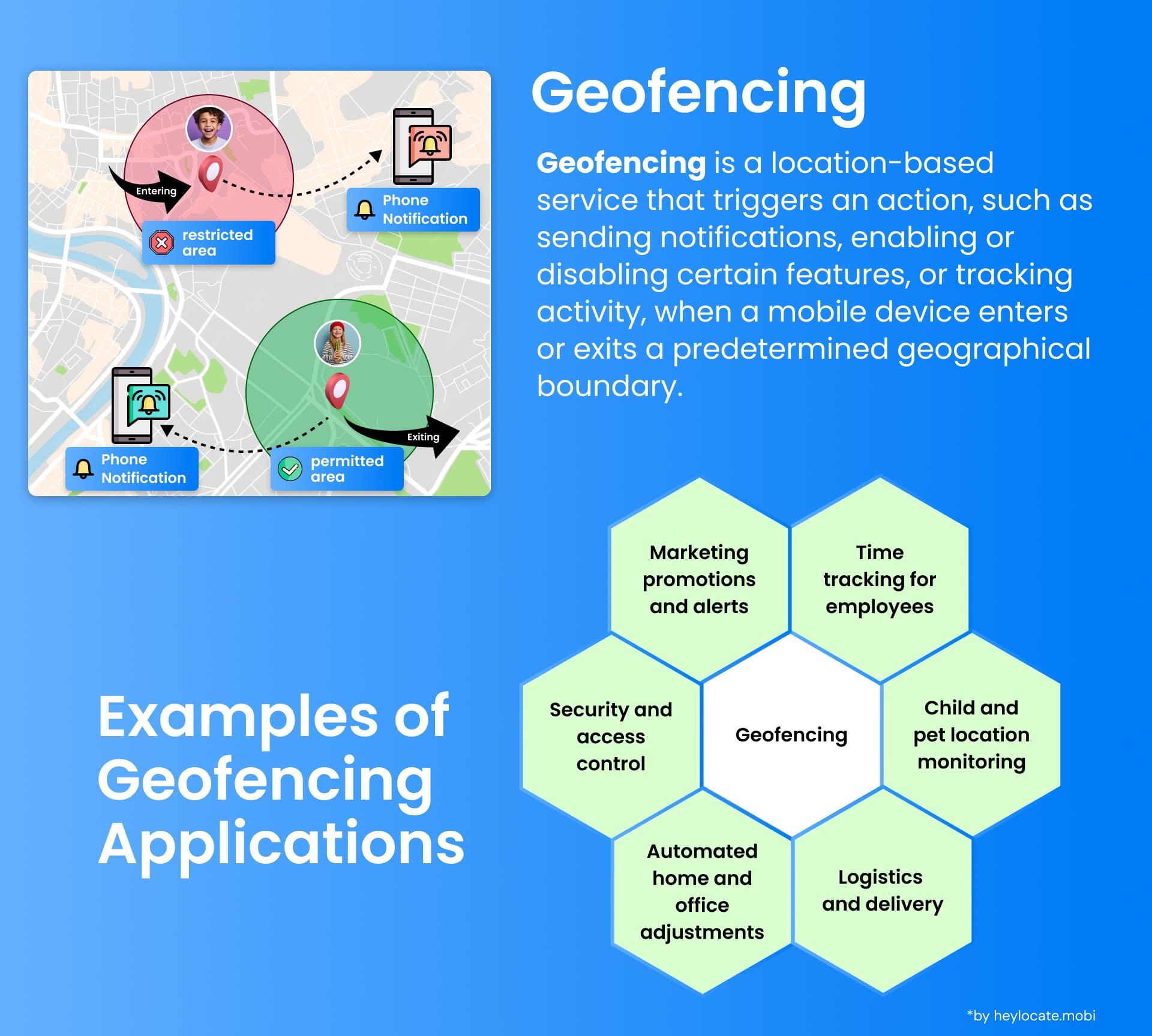Geofencing
What is Geofencing?
Geofencing is a technology that employs location-based services to establish virtual boundaries around physical geographic areas. These boundaries can be dynamically defined or preset depending on the specific requirements. When a device equipped with location services enters or exits a geofence, it activates predetermined actions such as sending notifications, triggering devices, or launching marketing campaigns.

How Geofencing Works
Geofencing leverages various technological frameworks to precisely pinpoint the user’s location and enact actions based on their proximity to predefined areas:
- GPS (Global Positioning System): This system enables devices to determine their exact location by receiving satellite signals, ensuring high precision in location tracking.
- IP geolocation: By mapping IP addresses to geographic locations, this method is utilized when GPS data is unavailable or when a less precise location determination suffices, offering flexibility in location-based services.
- Assisted GPS (A-GPS): A-GPS enhances the accuracy and speed of GPS by incorporating additional data from cellular networks. This integration aids in overcoming the limitations of GPS in urban environments or regions with obstructed satellite visibility, ensuring more reliable location tracking and geofencing functionality.
Types of Geofencing
Geofencing can be classified into two primary types:
- Active geofencing: This method entails continuously tracking and monitoring a user’s location using GPS or similar location-tracking technologies. Real-time tracking enables immediate detection when a user enters or exits a geofenced area, facilitating prompt actions or notifications.
- Passive geofencing: In contrast, passive geofencing gathers location data without actively tracking GPS signals. Instead, it relies on sources like Wi-Fi, cellular network data, or other available signals. This approach is less resource-intensive and is often preferred for data collection or analysis, where real-time tracking is not essential.
Practical Uses of Geofencing
| Category | Use Case | Description |
|---|---|---|
| Policing & Safety | Crime Prevention | Create virtual perimeters around high-crime areas. Receive alerts when someone enters or exits these zones |
| Child Safety | Define safe zones around schools or parks. Parents receive alerts if their child leaves these designated areas. Find the best geofencing apps for family on HeyLocate’s blog. | |
| Home Security | Automatically arm or disarm security systems based on the homeowner’s location | |
| Workplace & Asset Management | Fleet Management | Monitor vehicle locations, optimize routes, and ensure adherence to designated areas |
| Employee Timekeeping | Track employee presence during working hours within geofenced worksites | |
| Asset Tracking | Monitor valuable company property or equipment within geofenced zones to prevent unauthorized removal | |
| Marketing & Business | Targeted Advertising | Reach potential customers with relevant ads when they enter specific locations like shopping malls or event venues |
| Geomarketing | Analyze customer behavior and preferences within geofenced areas to inform marketing strategies and improve customer targeting | |
| Other | Mobile Payments | Trigger automatic payments upon entering specific zones, such as toll booths or parking lots |
| Smart Home Automation | Activate lights, thermostats, or other devices based on the user’s proximity to their home (geofence) | |
| Event Alerts | Receive notifications about concerts, festivals, or other events happening nearby |
References
- Rouse, Margaret (December 2016). “What is geo-fencing (geofencing)?”. WhatIs.com. Newton, Massachusetts: TechTarget.
- Namiot, Dmitry (2 December 2022). “GeoFence services | Namiot | International Journal of Open Information Technologies”.
- United States. Federal Aviation Administration, ed. (31 October 2008). “Global Positioning System wide area augmentation system (WAAS) performance standard”.
- Geo-fence – Wikipedia
- What is geofencing and how is it used? – TechTarget Definition
- What Is Geofencing? Everything You Need to Know About Location-Based Marketing
- Geofencing Marketing: What Is It & How Does It Work?